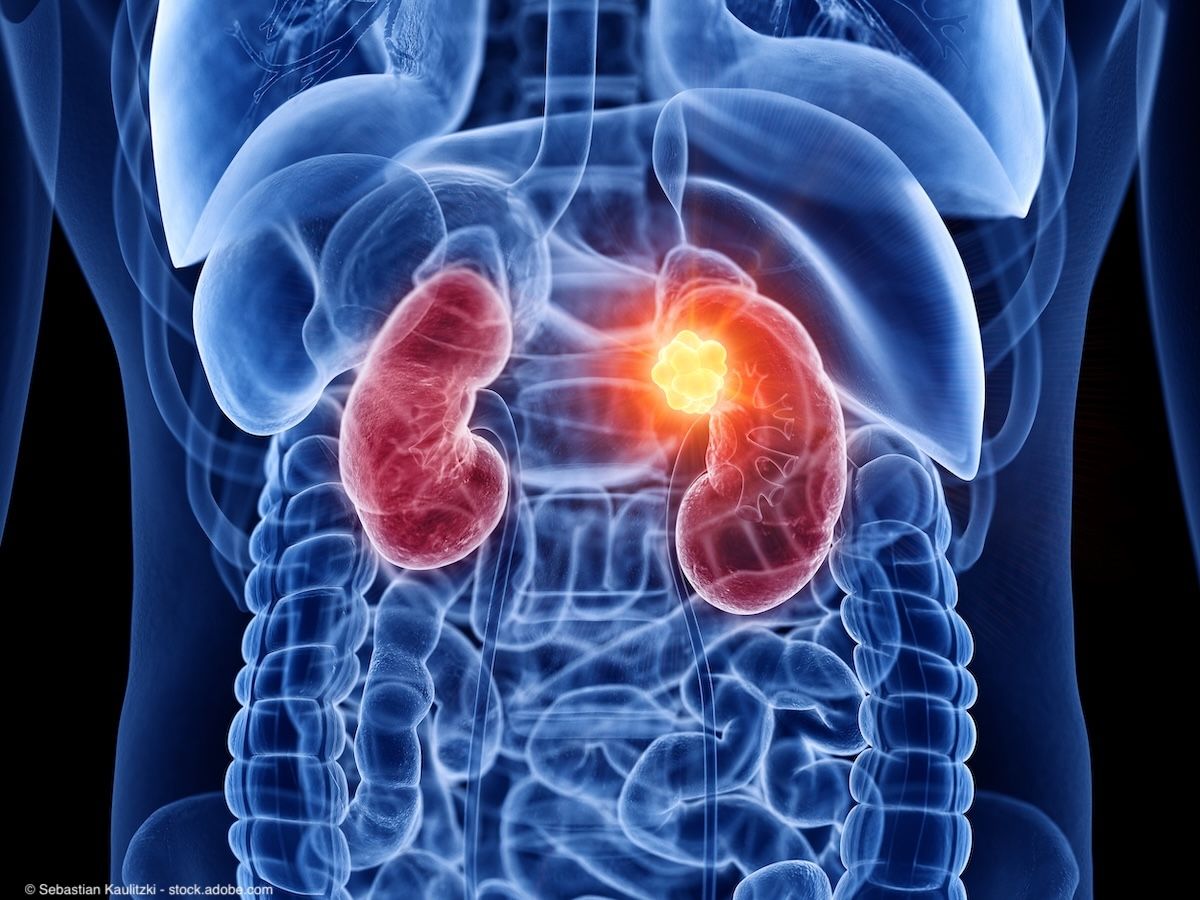News
Article
Cellular structures show link with survival outcomes in ccRCC
Author(s):
Key Takeaways
- Nuclear speckles in ccRCC exist in two states, Signature I and II, affecting tumor behavior and patient outcomes.
- Signature I is linked to later-stage tumors and poorer outcomes, while Signature II is associated with better survival when treated with nivolumab.
Among those with Signature II tumors, overall survival was improved among those who received nivolumab compared with those who received everolimus.
Recent findings published in Nature Cell Biology indicate that patterns of nuclear speckles—cellular structures located in the nucleus—may be correlated with clinical outcomes in clear cell renal cell carcinoma (ccRCC).1
"PD-1 inhibition may have a greater impact in individuals with Signature II tumors,” wrote the authors.

“We found that different therapies are more or less effective depending on how the speckles look,” said lead author Katherine A. Alexander, PhD, an assistant professor at Cold Spring Harbor Laboratory, Laurel Hollow, New York, in a news release on the findings.2 “This means potentially if a patient comes in with a normal or aberrant speckle state, they might be more responsive to one drug or another. Of course, more research needs to be done.”
According to the authors, nuclear speckles exist in 2 major states in tumors.
Signature II RNA-based speckles (“normal-like speckles”) are characterized by their central location in the nucleus, lower RNA expression of the TREX complex, and a similarity to healthy tissues (n = 40 genes). Signature I RNA-based speckles (“aberrant speckles”) have a more dispersed distribution in the nucleus, higher levels of the TREX complex, and a higher expression of speckle-associated genes (n = 77 genes).
Although these 2 signatures were found to occur in 24 different cancer types, only speckle patterns in ccRCC tumors were found to be closely associated with patient outcomes. Specifically, speckle Signature I was more common in later stage tumors, though was correlated with survival outcomes in both early and late-stage tumors. Tumor-adjacent “normal” tissues of ccRCC were found to have speckle Signature II patterns, suggesting that Signature I patterns may be reflective of a dysfunction in tumors.
The investigators then compared speckle signature to drug response using data from a clinical trial of everolimus (Afinitor) vs nivolumab (Opdivo) in ccRCC. Among patients with Signature I tumors, overall survival was not significantly different between the 2 treatment groups. Among those with Signature II tumors, overall survival was improved among those who received nivolumab compared with those who received everolimus.
“Thus, contrasting with HIF-2α inhibition, PD-1 inhibition may have a greater impact in individuals with Signature II tumors,” the authors noted.
“It’s the first suggestion that this would be potentially applicable to giving someone [diagnosed with ccRCC] one drug or another. That’s huge because cancer therapy has a lot of horrible side effects,” Alexander added in a news release.3 “To be able to tell a patient, ‘Your tumor looks like this, so we think this drug will work better than this drug,’ is something we really need.”
The investigators hypothesized that this correlation may be due to HIF-2α. They posit that HIF-2α may serve as a second transcription factor regulating DNA-speckle association alongside p53, for which an association has previously been demonstrated.
They found that nuclear speckles play a role in regulating HIF-2α functional programs in ccRCC. Specifically, they “shift functional programs and the types of target genes that are preferentially activated by HIF-2α,” according to the authors.
The authors further explain, “We propose that this alteration of HIF-2α functional programs by speckles in ccRCC underlies speckle-based differences in patient survival and may influence tumor responsiveness to certain types of therapy.”
However, they note that further research is still necessary to fully understand how this process works, as well as other potential functions of speckles in health outcomes.
“How these signatures affect patient outcomes remains a mystery for now,” concluded senior authors Shelby L. Berger, PhD, a professor at the University of Pennsylvania, Philadelphia, in the news release.2 “However, the search for answers may lead to more personalized treatments. This discovery offers a new starting point in ccRCC.”
References
1. Alexander KA, Yu R, Skuli N, et al. Nuclear speckles regulate functional programs in cancer. Nature Cell Biology. 2025. doi:10.1038/s41556-024-01570-0
2. A speckle of hope for cancer patients. News release. Cold Spring Harbor Laboratory. Published online and accessed January 2, 2025. https://www.eurekalert.org/news-releases/1069255
3. Discovery links cellular structures to kidney cancer treatment outcomes. News release. Perelman School of Medicine at the University of Pennsylvania. Published online and accessed January 2, 2025. https://www.newswise.com/articles/discovery-links-cellular-structures-to-kidney-cancer-treatment-outcomes
Newsletter
Stay current with the latest urology news and practice-changing insights — sign up now for the essential updates every urologist needs.
















